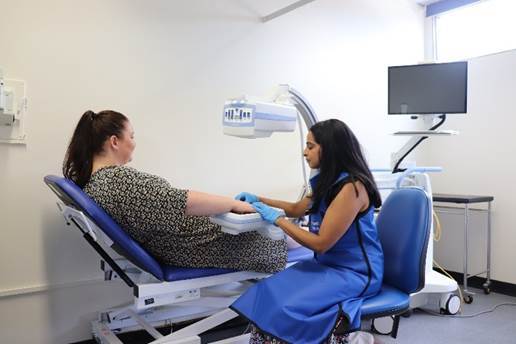READING residents experiencing arthritis have a new all-in-one service to streamline treatment.
The Royal Berkshire Hospital is now home to a “one stop” service for treating osteoarthritis in hands and wrists, the National Health Service has announced.
The trauma and orthopaedics team at the trust have launched the new clinic to bring together resources, reduce pressure on other departments, and bring waiting lists down for treatment.
The south block of the hospital has been fitted with a new x-ray machine so that clinicians can now conduct imaging of the hand and wrists with what is called a mini C-arm scanner.
This means diagnosis, assessment, and treatments can be administered in a single visit to the hospital, including real-time imaging.
A quarter of referrals from GPs to the hospital consist of arthritis patients, as the condition is often a result of natural wear-and-tear as people age.
It can be difficult to live with, and the new clinic is intended to reduce pressure on the hospital as well as patients.
The new C-arm scanner can also be used to treat patients with broken bones, and can be used in many cases to avoid surgery.

The news follows the establishment of a Duputryen clinic earlier this year, where patients with Duputryen’s disease can now be assessed and treated in a single visit, without the need for theatre surgery.
The initiative reduced hospital visits for relevant patients while freeing up theatre space for more complex procedures.
Trauma and orthopaedic consultant Natasha Picardo said, “We hope this clinic makes a big difference to patients who have arthritis in the hands and wrists.
“Living with pain is exhausting, and makes normal life difficult– to be able to see patients just once, often within weeks of an initial referral, means they can receive treatment and get on with their lives much more quickly.”
She explained: “Before this clinic, it could take a year from GP referral, to first appointment, to x-ray, and then on to treatment in our radiology department or in an operating theatre.
“It was important to us to come up with a way to streamline things– it means our patients get the treatment they need more quickly, and also takes pressure off of our colleagues in other departments, freeing them up to deal with other patients.”











































